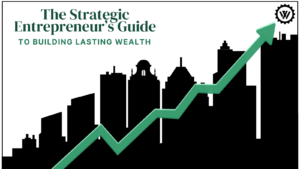What’s the fastest way to pay off debt? And which loans should you pay off first? If you have debt you’d like to get rid of, read on, and avoid some of the common missteps people make.
Many people, eager to get rid of their debt, make critical mistakes that increase their risk, add complexity, and make the process much slower than it has to be.
Using the 5 step process below will help you pay off your existing debts the fastest, safest, and most efficient way possible.
It’s not just a matter of prioritizing which loans should be paid off first. This is about being efficient with your cash flow, creating predictable results, and minimizing your risk throughout the process.
The Story
Consumer debt in the U.S. is nearly as high as it’s ever been. In fact, it’s just shy of $13 trillion and almost equal to the dangerous 2008 levels.
New bubbles have also formed. Student loan debt has ballooned to $1.78 trillion. Auto loan debt surpassed the $1 trillion dollar mark for the first time in 2016, and the latest figures show American auto loan debt has grown to $1.5T.
In short, Americans are swimming in debt.
The average American household has $5,944 in credit card debt and an average of $163,268 in total debt.
Why Should I Care?
Almost everyone acquires some debt in their lifetime.
And how you go about paying off your debt can have a profound effect on your financial safety, security and wealth creation potential.
Many people feel the key is to simply stick to a budget. Which means cutting things out of your life. We’ve already written about how budgeting sucks, which is why most people struggle with it.
Focusing on cash flow works better because it tackles the root of the problem first. Then it systematically eliminates debt while still allowing you to enjoy your money along the way.
So the methods we show you today will not only help you eliminate debt quickly and safely, they will also help you increase your cash flow and live wealthier now.
How Does It Work?
At Wealth Factory, we believe in simplifying finances, reducing risk, and speeding up the results.
In our 1-on-1 financial coaching, we cover nine critical areas when it comes to creating financial strength, increasing cash flow, and eliminating debt.
Below is a simplified version of how you can implement this same process in your life right now. This is a broad overview of the entire process.
In the next two issues of your Living Wealthy Weekly newsletter, we’ll go into more details and give you examples of how you can use this system in your own life.
Step #1 — Build Liquidity First
Before you ever start trying to pay down your debt (your obligation to someone else), you should first have at least three months of income (and ideally six months) in a liquid savings account. You want to protect yourself first.
This is like the instructions you hear on an airplane: Always secure your own oxygen mask before assisting others.
Because if you have no cash reserves, what happens when you pay down your loans but then experience an unexpected cash flow crunch? You simply increase your loan balances again or even worse, miss payments or go into default.
So before you even get started with paying down debt, step one is to build your cash reserves.
This seems counterintuitive, but it is a critical first step. It puts you in a much safer and more sustainable position.
Step 2 — Use Cash Flow Recovery Techniques to Increase Your Cash Flow
We have dozens of cash recovery techniques we teach our clients, but one super easy and quick method is to raise your insurance deductibles
You don’t want to do this until you have your 3 months cash reserves in place. But once you have your cash reserves, raising your deductibles will decrease your monthly premiums. This increases your monthly cash flow which can then be used to strategically pay down debt using the methods in the following steps.
The overriding principle here is that when you approach debt elimination the right way it affects almost every other aspect of your finances. This is a more comprehensive approach that takes every factor into consideration, rather than simply looking at your debt in a vacuum.
Taking the time to put these steps in place first will assure a smooth, safe, and highly effective debt elimination process to follow.
Step 3 — Blast Through Your Loan Repayments Using A Formula Invented By a Former Rocket Scientist
You may not know this, but we have a former Rocket Scientist on The Accredited Network team.
He’s now a Cash Flow Optimization specialist, and he’s applied his engineering skills to come up with some incredibly efficient ways to recover lost monthly cash flow.
Using his techniques makes you a little richer every month without working harder.
One of those is a very cool formula anyone can use called a Cash Flow Index (CFI).
It helps you pay off your loans 2-3 times faster than if you don’t have a plan.
This saves you interest and gives you more money to invest, to put towards your business, or to just live a little wealthier.
To calculate the CFI, you simply plug a couple numbers from your loan statements into the formula (it has nothing to do with the interest-rate)…
And out pops a roadmap that tells you which loans to pay off first … and the exact order to pay them off in the most efficient manner.
We’ll go into more detailed examples of how this works in next week’s newsletter, including giving you the exact formula.
Step 4 – Use the Investment Cash Flow Index to Turn Dead Assets into new Cash Flow
If you’ve followed the first three steps, you now have liquid cash reserves, extra cash flow, and a roadmap for which debts to pay off first.
Now it’s time to see if you can accelerate things.
To do this, we turn to another simple formula called the Investment Cash Flow Index.
We will be going over detailed examples of how this works in the third installment of this article in a couple of weeks.
For now, just understand that the Investment Cash Flow Index tells you which investments are doing great, and which ones you should consider cashing in.
And it does this in an objective, non-emotional way. You just look at the score and rank your investments.
Cashing out inefficient investments and using the proceeds to pay off or pay down inefficient loans is one of the quickest ways to dramatically increase your monthly cash flow.
Then, by tapping into your Investor DNA, you can use that extra money to buy new cash flow investments.
These kinds of efficiencies have a multiplying effect on your wealth over time.
Step 5 — Restructure Your Debt through Loan Consolidation
The final step is to look for ways to restructure your debt. The goal is to minimize your interest payments and maximize your cash flow. Then you can attack your remaining debt strategically, using your increased cash flow to eliminate one loan at a time.
For example, if you own a home, you can look into a streamline refinance on your existing mortgage.
Assuming you have enough home equity and a good credit rating, roll as much of your non-deductible loans (credit cards, auto loans, etc.) into your refinance it as possible. This not only lowers your monthly payments, the tax deduction will also increase your cash flow.
CAUTION: Do NOT attempt this if you’re undisciplined and your spending is out of control. If you’re just going to charge your credit cards back up again, you’ll just sink deeper into debt.
What To Do Next
Increasing monthly flow and eliminating inefficient loans is the quickest, safest and most sustainable way to reduce your debt and increase your wealth.
With that in mind, here are 3 action steps to consider:
- Start saving a percentage of your monthly income immediately to build up your liquid savings. Do not start a debt reduction plan until you have at least 3 months of living expenses saved up.
- Be sure to read the next 2 articles in this series (coming in the next 2 weeks) and use the Cash Flow index numbers to strategically map out which loans to pay off first.
- If you have a Cash Flow Banking system set up, consider paying off inefficient loans with your Cash Flow Bank so you can recapture the interest you’d otherwise be paying to a bank. This is one of the most efficient “refinance” options available.
And if you don’t yet have a Cash Flow Bank set up?
For the next day or so, you can get in on the Cash Flow Banking course during the time-limited open enrollment window. The course shows you how to build your own Cash Flow Bank and lifelong wealth-building system from the ground up, step-by-step.
Plus the course also gives you at least 17 different ways to boost your monthly cash flow without increasing your income. Some people even tell us it’s like getting “free money.”
It’s all about efficiency, and our money nerds are constantly working hard behind the scenes to find the fastest, simplest ways to put more money in your pocket.
Until next week…
Build the life you love,
The Builders at Wealth Factory
What is Living Wealthy Weekly?
Each week we share timely trends, news stories, and current events that affect your life. We help you see the impact, personally and socially, and give you possible solutions to avoid any negative effects. We also give you additional links and resources if you want to investigate further. The purpose is not to be the last word on any topic. Rather it’s to help us all stay informed of what’s going on in the world without letting those events negatively impact your lifestyle. Our goal is to help us all live richer, fuller lives from a position of financial strength. This allows you to weather economic hard times, and seize whatever new opportunities arise in our changing world.


